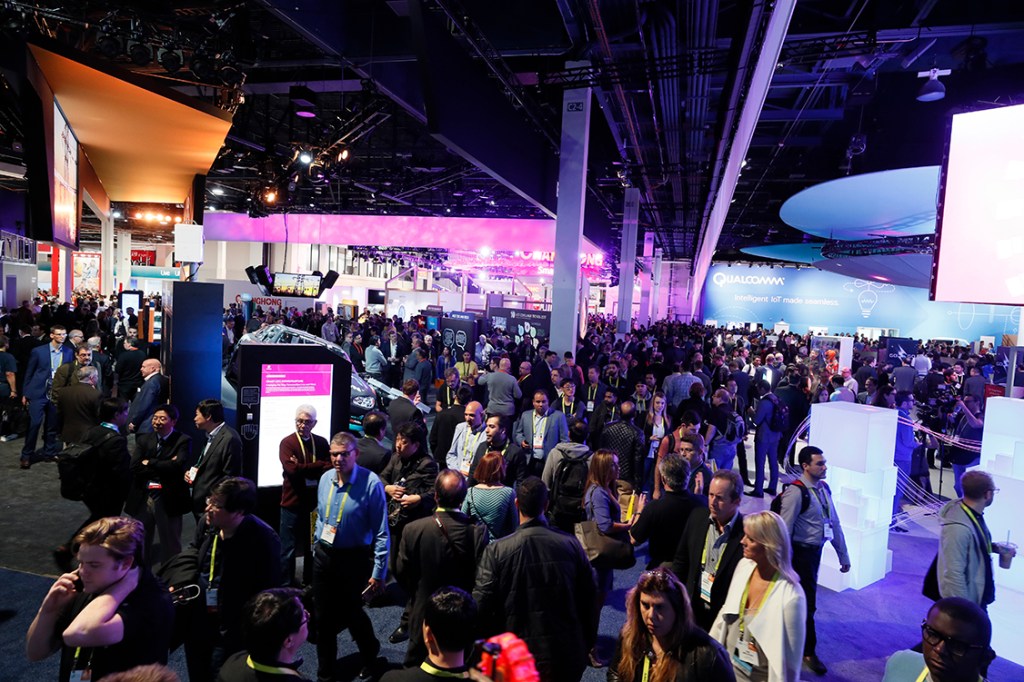The 50th annual Consumer Electronics Show (CES) kicked off on Jan. 5, in Las Vegas, with product launches from 3,800 companies. Spanning 2.6 million square feet of show floor space, it is the largest iteration in CES’ history. In recent years, the show has been the launchpad for groundbreaking products, including self-driving vehicles, wearables, 3D technology, and virtual reality devices. We spotted seven tweets featuring products from this year’s show that hold potential for the architecture, building, and design industries:
Mark X, Markforged
This 3D printer uses atomic diffusion additive manufacturing to form durable parts out of metal powder mixed with a plastic binder. The printer has a build volume of 9.8″-by-8.66″-by-8.66″, and is available for purchase now, for shipping in September. markforged.com
The Mark X 3D Printer: Bigger, More Precise, Built In Quality Con https://t.co/rd0DCYdMEf #3dprinting #markforged pic.twitter.com/DwE2ivfEYl
— NxRev Inc. (@NxRev) December 21, 2016
Flexible lithium-ion battery, Panasonic
The Japanese electronics company is demo-ing a flexible lithium-ion battery that is capable of delivering power even when distorted—a promising capability for wearable IoT. panasonic.com
Bendable lithium ion battery for wearables by @panasonic #CES2017 pic.twitter.com/LqyOcTQJRh
— Tom Emrich #CES2017 (@tomemrich) January 5, 2017
Quilla, QuirkLogic and E Ink
The lightweight, 42″ display uses E Ink’s electronic ink technology and the company’s connected eWriter to show markings and images. The board can be operated solely on solar power if needed. eink.com
Quirk Logic's Quilla is a 42-inch e-paper display – the largest ever #CES2017 pic.twitter.com/kXWEoX6vXT
— TechCrunch (@TechCrunch) January 6, 2017
Lego Boost Creative Toolbox, Lego
Set to be released in August 2017, this 840-piece kit allows children—and adults—to create five multi-functional Lego models, including a robot and a guitar. With the help of additional non-traditional Lego pieces, like an interactive motor and a color and distance sensor, kids can connect their creations to a smartphone app and control them remotely. lego.com
Lego Boost Turns Your Bricks Into Robots https://t.co/4iOehIxPWX #CES2017 #Tech #Technology #Robots #Robotics #makers #iot #toys @Sanemavcil pic.twitter.com/mRmcEHgbeS
— Sanem Avcil #CES2017 (@Sanemavcil) January 5, 2017
Pico Neo CV, Pico Technology
This wireless, lightweight virtual reality headset boasts two 1.5K virtual reality displays at 90 hertz with 360-degree viewing capabilities. A high-fidelity speaker equipped with an AM3D 3D spatial rendering engine helps better the user experience. pico-interactive.com
Pico Technology reveals untethered virtual reality headset https://t.co/WBwvrix8FC #Pico #NeoCV #VR #CES pic.twitter.com/WKgyUUA69F
— Spectral VR (@goSpectral) January 5, 2017
OfficeIQ, Humanscale
Created in collaboration with with Detroit-based Tome Software, OfficeIQ lets employers gather data anonymously about their employees’ sitting and standing habits using wearable sensor technology—all in the effort to promote health and wellness, of course. humanscale.com
Experience OfficeIQ at #CES2017 booth 43110! Be one of the first to see new features such as wearable tech integration. #DesignForHumans pic.twitter.com/sf8WgcN7Mt
— humanscale (@humanscale) December 29, 2016
Helia, Soraa
Helia is a smart LED lamp that automatically provides light emulating natural daylight during the day and warm, blue light–free illumination at night. A smartphone app accompanies the lamp for optimal performance, allowing users to personalize their location and sleeping habits.
soraa.com
CES 2017: Soraa unveils smart warm white LED luminairehttps://t.co/wsoupreJh3#BizLED #LEDMagazine #LEDLighting #LEDs pic.twitter.com/awUFK4dYe8
— Biz Led (@BizLEDMagazine) January 5, 2017
